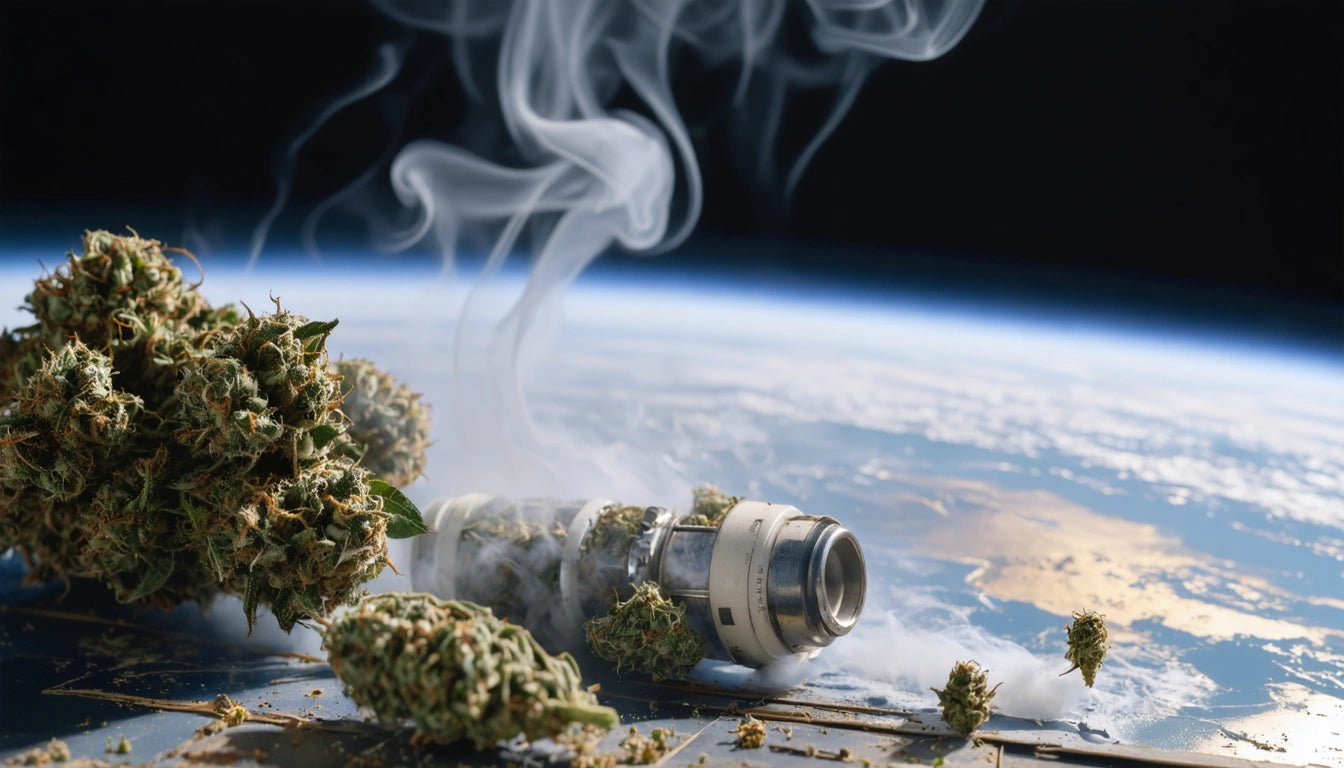Table of Contents
- Ancient Origins: When Did People First Start Smoking Weed?
- Ancient Cultures and Cannabis: The First People to Smoke Weed
- The Spread of Cannabis Throughout the World
- Modern Cannabis Culture: From Prohibition to Acceptance
- Cannabis in Space: Breaking the Final Frontier
- The Historical Significance and Future of Cannabis Consumption
The Origins and Early History of Weed Smoking: From Earth to Space
The question of when people started smoking weed takes us on a journey through thousands of years of human history. Cannabis has been used by various civilizations for medicinal, spiritual, and recreational purposes, with evidence dating back to ancient times. This exploration into cannabis history reveals not only when people first started smoking pot but also how this practice evolved across different cultures and eventually reached the stars.
Ancient Origins: When Did People First Start Smoking Weed?
Archaeological evidence suggests that humans began using cannabis as early as 2800 BCE. The discovery and origins of cannabis can be traced to Central Asia, particularly in regions that now include China, Mongolia, and southern Siberia. The earliest concrete evidence of cannabis use comes from the Yanghai Tombs in the Xinjiang region of China, where researchers discovered a 2,700-year-old stash of cannabis in the tomb of a shaman.
While it's impossible to identify who was the first person to smoke weed with absolute certainty, these ancient shamans are among the earliest documented users. They likely consumed cannabis for its psychoactive properties during religious ceremonies and healing rituals.
Ancient Cultures and Cannabis: The First People to Smoke Weed
Several ancient civilizations incorporated cannabis into their cultural practices:
- Ancient China (2900 BCE): Emperor Shen Nung, considered the father of Chinese medicine, documented cannabis use in his pharmacopeia.
- India (1500 BCE): Cannabis was mentioned in sacred Hindu texts as one of the five sacred plants, used in religious ceremonies and ayurvedic medicine.
- Scythians (700 BCE): These Eurasian nomads were documented by the Greek historian Herodotus to have used cannabis in ritual steam baths.
- Ancient Egypt (1550 BCE): Medical papyri mention cannabis as a treatment for various ailments.
The methods of consumption varied across these cultures. Some burned cannabis seeds and flowers as incense, others created potent preparations for medicinal use, and many incorporated it into religious ceremonies. The original uses of marijuana were diverse and deeply integrated into these ancient societies.
The Spread of Cannabis Throughout the World
As trade routes developed, cannabis spread from Central Asia to the Middle East, Africa, and eventually to Europe and the Americas. Each culture adapted cannabis use to their own practices:
In the Middle East, cannabis became known as hashish and was used both recreationally and in Sufi religious practices. By the 13th century, it had spread to Egypt and throughout the Arab world.
Cannabis arrived in Europe primarily as hemp for industrial purposes, but its psychoactive properties were also recognized. By the 16th century, explorers and traders had introduced cannabis to the Americas, where it was initially grown for hemp fiber.
The evolution of cannabis consumption methods has been remarkable. From primitive pipes and water bongs to the sophisticated equipment used today, the technology for consuming cannabis has advanced significantly. Modern consumers benefit from precision tools like automated filling equipment for consistent dosing that ancient users could never have imagined.
Highlight: When people first started smoking weed around 2800 BCE, they used rudimentary methods like heated stones in enclosed spaces. Today's consumption methods reflect thousands of years of innovation.
Modern Cannabis Culture: From Prohibition to Acceptance
The 20th century saw dramatic shifts in attitudes toward cannabis. The early 1900s brought waves of prohibition, with the United States leading efforts to criminalize marijuana. The history of marijuana prohibition reveals how political, racial, and economic factors contributed to cannabis becoming illegal.
The counterculture movement of the 1960s and 1970s embraced cannabis as a symbol of rebellion and alternative consciousness. During this period, when people were openly smoking pot despite legal restrictions, cannabis became firmly established in popular culture.
The late 20th and early 21st centuries have witnessed a gradual reversal of prohibition policies. The timeline of cannabis legalization shows the progressive acceptance of both medical and recreational use across various regions.
Cannabis in Space: Breaking the Final Frontier
The question of who was the first person to smoke weed in space remains controversial. While there are rumors and claims, no verified accounts exist of astronauts consuming cannabis during official missions. NASA and other space agencies maintain strict drug policies for their astronauts, making unauthorized cannabis use extremely unlikely.
However, cannabis has made it to space in other forms. In 2019, front-page news was made when hemp plants were sent to the International Space Station as part of agricultural research. This experiment aimed to study how microgravity affects plant growth and could potentially lead to innovations in cannabis cultivation.
As private space travel becomes more common, the question of cannabis in space may become less theoretical. Companies developing space tourism may eventually need to address policies regarding cannabis consumption in orbit, especially as travelers from regions where cannabis is legal seek to maintain their lifestyle preferences.
The Historical Significance and Future of Cannabis Consumption
The story of when people started smoking weed reflects broader human history: our relationship with plants, cultural exchange through trade, medical discoveries, religious practices, and social control through prohibition. From ancient shamans to famous figures who have consumed cannabis, this plant has influenced human society for millennia.
Today, as legal barriers fall and scientific research advances, we're witnessing a renaissance in cannabis use and understanding. Modern consumers benefit from knowledge accumulated over thousands of years, with access to precisely formulated products, research-backed medical applications, and innovative consumption methods.
The journey from ancient ritual use to potential space consumption represents humanity's enduring relationship with this remarkable plant. As we look to the future, cannabis continues to evolve in its applications, perceptions, and cultural significance, writing new chapters in a story that began thousands of years ago in the foothills of Central Asia.











Leave a comment
All comments are moderated before being published.
This site is protected by hCaptcha and the hCaptcha Privacy Policy and Terms of Service apply.